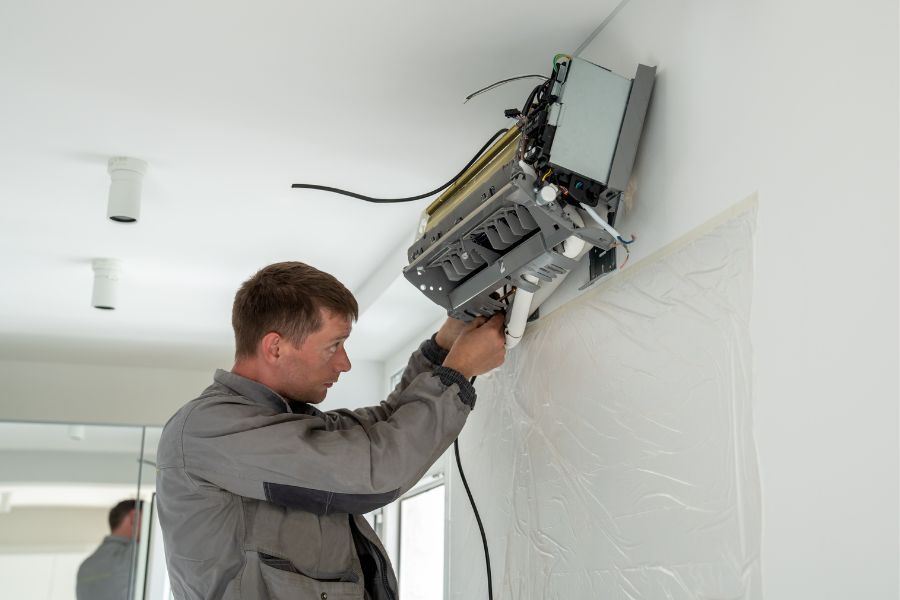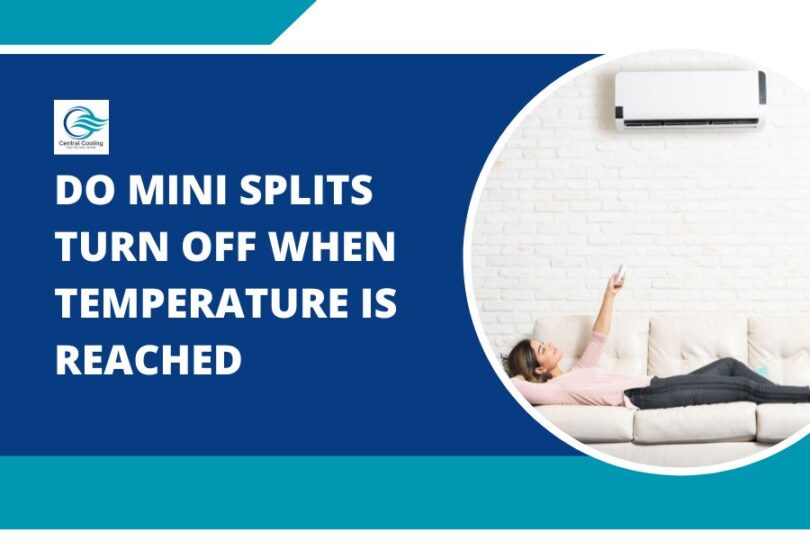Mini split air conditioning systems, known for energy efficiency and flexibility, do turn off when the desired temperature is reached. Comprising outdoor and indoor units, they use refrigerant to transfer heat. Temperature control is precise, with advanced sensors signaling the outdoor unit to shut off when the set temperature is achieved. Factors affecting operation include insulation quality, thermostat placement, and air leaks. Energy-saving features like timers, sleep mode, and economy mode further optimize efficiency. With inverter technology and zoning control, mini splits offer energy savings and remote control options for convenient temperature management. Addressing influencing factors ensures the effectiveness of these systems in maintaining comfort and efficiency.
Introduction:
Mini split air conditioning systems have gained popularity recently due to their energy efficiency and flexibility. These systems, also known as ductless or split systems, provide targeted cooling or heating to specific zones or rooms in a building. One common question when considering a mini split system is whether it turns off once the desired temperature is reached.
The simple answer is yes; mini splits turn off when the desired temperature is reached. However, it is important to understand how these systems work and the factors that can affect their operation.
How Mini Splits Work
 Mini splits, instead of standard central air conditioning systems, include two primary components: an outdoor unit and one or more indoor units. The compressor and condenser are housed in the outdoor unit, while the evaporator and air-handling parts are housed in the internal units.
Mini splits, instead of standard central air conditioning systems, include two primary components: an outdoor unit and one or more indoor units. The compressor and condenser are housed in the outdoor unit, while the evaporator and air-handling parts are housed in the internal units.
Mini-splits use refrigerant to transfer heat from indoor to outdoor units. In cooling mode, the indoor unit absorbs heat from the room, and the refrigerant carries it to the outdoor unit, where it is released. The process is reversed in heating mode, with the outdoor unit absorbing heat from the outside air and transferring it indoors. Let’s look at the specifics of how a mini split works.
Temperature Control And Automation
Users of mini split systems can set the preferred temperature for each zone or room using a thermostat or remote control. Once the indoor unit detects that the room has reached the desired temperature, it will signal the outdoor unit to shut off.
Thanks to advanced sensors and algorithms, temperature control is usually precise and accurate with mini splits. These systems can maintain the desired temperature within a narrow range, providing comfort and energy efficiency.
Factors Affecting Mini Split Operation

While mini splits are designed to turn off when the desired temperature is reached, certain factors can affect their operation and prevent them from shutting off completely. These factors include:
- Insulation: Poor insulation can result in heat loss or gain, causing the mini split to work harder to maintain the desired temperature. Insufficient insulation can lead to longer operating times and higher energy consumption.
- Thermostat Placement: Temperature regulation may be impacted by the thermostat’s placement. The thermostat may incorrectly read the room temperature near a heat source or in direct sunshine, making the mini split run longer than necessary.
- Windows and Doors: The temperature within a building can be affected by leaky windows and doors that allow hot or cold air to enter or exit. Proper sealing and weatherstripping can help minimize these air leaks and improve the efficiency of the mini split system.
Energy-Saving Features
Many mini split systems have energy-saving features that can further optimize their operation. These features include:
- Timer Function: The timer function allows users to program the mini split to turn on or off at specific times. This feature can help save energy by avoiding unnecessary cooling or heating when the room is unoccupied.
- Sleep Mode: Sleep mode adjusts the temperature gradually at night to provide optimal comfort while conserving energy. This feature is especially useful for bedrooms.
- Economy Mode: Economy mode reduces the cooling or heating capacity of the mini split to save energy. It is ideal for situations where precise temperature control is not required.
Frequently Asked Questions
How Do Mini-Splits Maintain Temperature?
Mini-splits use inverter technology and temperature sensors to continuously monitor and regulate the indoor climate, cycling the compressor and adjusting fan speed.
Can I Save Energy With A Mini-Split System?
Yes, mini-splits are energy-efficient due to features like inverter technology and zoning control, which allows you to heat or cool specific areas, reducing energy waste.
Do Mini-Splits Have Remote Control Options?
Many mini-split systems offer remote control, smartphone apps, or Wi-Fi connectivity, allowing you to adjust settings remotely for convenience and energy savings.
Conclusion
The efficiency and effectiveness of mini split air conditioning systems in maintaining desired temperatures are undeniable. However, it’s crucial to acknowledge the influence of external factors such as insulation quality, thermostat placement, and air leaks on the system’s performance. By proactively addressing these factors and harnessing energy-saving functionalities like timers, sleep mode, and economy mode, users can further optimize the operation of mini split systems, maximizing both comfort and energy efficiency in their spaces. With the continued advancement of technology in this field, mini splits offer a convenient and eco-friendly solution for personalized climate control in residential and commercial settings alike.
Disclosure: We may get commissions for purchases made through links in this post.








